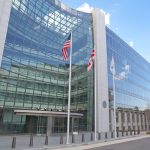The initial Basel III Endgame proposal is out from the US banking regulatory agencies, and as I warned in my prior coverage of the Invesco KBW Bank ETF (NASDAQ:KBWB), things don’t look great for the sector. The release outlines requirements for banks to hold significantly more capital across the board; this is incremental to the ‘systemically important’ (GSIB) surcharge for category one banks, implying large caps will see significantly reduced balance sheet capacity for income-generating activities. While the lengthy 120-day comment period means there could yet be changes to the finalized framework, all roads point to a larger increase in capital requirements going forward and, by extension, impaired earnings power for the banks.
Beyond Basel Endgame, the sector isn’t out of the woods on the regulatory front, with an extension of long-term debt requirement rules also likely to hit the non-GSIB banks down the line (note GSIBs already comply with these loss-absorbing capacity requirements). All in all, these regulatory headwinds will only compound the net interest margin [NIM] compression set to hit P&Ls once the Fed wraps up its hiking cycle and eventually pivots (likely in 2024). Hence, banks appear set for structurally lower balance sheet growth, returns on their equity base, and, by extension, capital returns (dividends and buybacks).
To be clear, there are winners and losers here, as banks with more diversified revenue streams (geographically and by business lines) should prove more resilient. Mid-caps and regionals, on the other hand, will struggle amid a higher deposit cost/sluggish loan growth backdrop, as well as potential asset quality stress once higher rates start to bite. Net, the current valuation discount for the KBWB portfolio, spread evenly across US large and small/mid-caps, seems warranted, and I won’t be dipping in anytime soon.
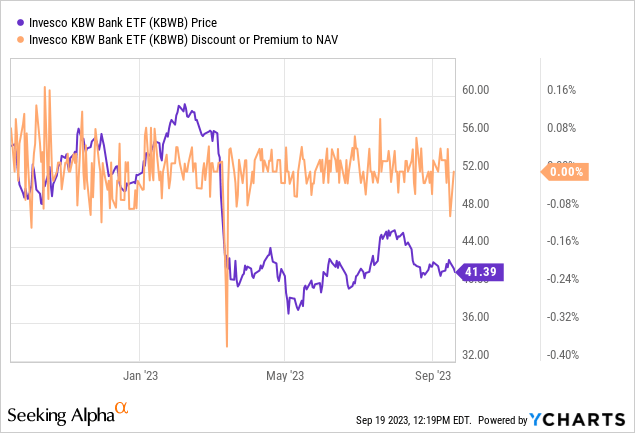
Fund Overview – A Competitively Priced US Bank Pure Play
The Invesco KBW Bank ETF tracks (pre-expenses) the performance of the publicly traded US banking universe via the KBW Nasdaq Bank Index, a modified-market cap-weighted index spanning the large-cap banks to smaller regional banks and thrifts. The ETF has seen its net asset base grow to $1.8bn (up from $1.3bn prior) but maintains a 0.35% expense ratio, in line with comparable banking sector ETFs like the SPDR S&P Bank ETF (KBE).
The fund’s banking exposure remains skewed toward large-caps (51.7%), followed by mid-caps (40.9%), and small-caps (7.4%). The single stock portfolio composition is also broadly in line with prior reporting, led by Wells Fargo (WFC) at 8.4%, Goldman Sachs (GS) at 8.3%, and Morgan Stanley (MS) at 8.3%. The portfolio size has shrunk by one to 25 stocks, though outside of the top five, the fund is well spread out – no single allocation exceeds the 5% threshold.
Invesco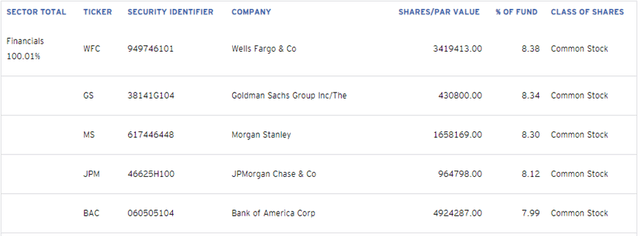
Fund Performance – Great Income, but the Recovery is Stalling
While the strong Q2 reporting has helped, the ETF’s returns remain lackluster at -17.1% YTD, far underperforming the broader financials universe (proxied by the S&P 500 Financials Index). This means that since inception in 2011, the fund has compounded at an annualized +9.0%; excluding the post-financial crisis gains, though the track record has been less impressive (-3.1% over the last five years). And relative to the S&P 500 Financials, KBWB has trailed by over three % pts on an annualized basis. That said, the manager deserves credit for maintaining a narrow tracking error vs. the fund’s benchmark KBW Nasdaq Bank Index, even after accounting for expenses.
Invesco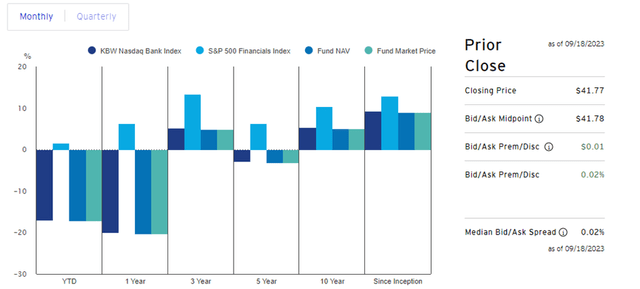
The fund’s distribution, on the other hand, continues to pace well ahead of most other sector-focused ETFs. With the September distribution also coming in ahead of last year, the 30-day SEC yield now stands at ~4%, ahead of key peer KBE’s 3.4% due to its more concentrated portfolio. Underwriting this pace of capital return is tricky, though, given the mounting headwinds US banks will need to navigate, particularly with regard to capital requirements. The market is aligning with a more pessimistic view here as well, with the KBWB portfolio de-rated over the last quarter to ~8x fwd P/E and ~0.9x P/Book.
Morningstar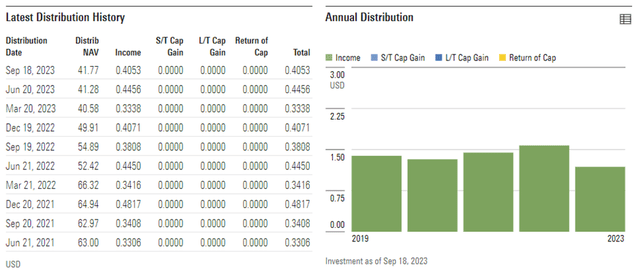
Basel Endgame Deals Another Blow to the Banks
Any bank-related optimism from a solid Q2 earnings season was quickly dashed following the release of highly restrictive Basel III Endgame capital requirements, particularly for the large-cap banks. More regulatory headwinds are in the pipeline, though, with the smaller banks also likely to be hit by higher loss-absorbing capacity requirements (in line with the systematically important banks) once new long-term debt requirements get finalized.
Either way, the path is clear for higher capital requirements from here, negatively impacting the sector’s earnings power and capital return potential. And having already pulled a ton of levers to optimize the existing operations (e.g., layoffs and shutting down less profitable business lines, etc.) following the last round of capital increases, it’s unclear if the banks have any cushion left to protect their ROEs going forward.
Given the regulatory headwind is a sector-wide phenomenon, the KBWB fund’s spread across the large and small/mid-caps won’t count for much here. Nor is the fund shielded from peaking rates or asset quality risks, particularly in commercial real estate. So as cheap as the current ~0.9x P/Book might seem at first glance, the impaired earnings outlook in a ‘new normal’ means the relative valuation discount vs. the rest of the S&P 500 is probably warranted here.
Read the full article here



